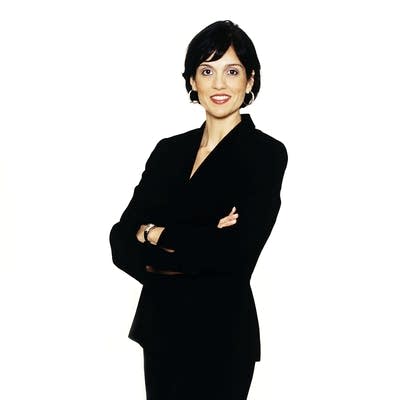Olga Viso looks to develop the Walker's strengths
Go Deeper.
Create an account or log in to save stories.
Like this?
Thanks for liking this story! We have added it to a list of your favorite stories.

Olga Viso likes to spend time in a section of the Walker that features individual artists the museum has championed over the years. Artists such as Sherry Levine, Kara Walker, and Matthew Barney have been shown here. You can see how the Walker's purchases or commissions over extended periods follow the evolution of their work.
"And that is one of things that I think makes the Walker very special is that commitment to artists and that long term relationship of fostering an artists growth and also staying with them throughout their career," she says. "And the collection is very much distinguished by that depth."
Viso comes to Minnesota from the Smithsonian Institution's Hirshhorn Museum and Sculpture Garden in Washington, which focuses on contemporary art.

Like Kaywin Feldman at the Minneapolis Institute of Arts, she arrives when the Walker has recently completed a successful expansion and capital campaign. She was drawn to the Walker because of its interdisciplinary mission. She believes artists of all stripes increasingly cross boundaries.
Turn Up Your Support
MPR News helps you turn down the noise and build shared understanding. Turn up your support for this public resource and keep trusted journalism accessible to all.
"The Walker is really the foremost institution in this country, and arguably the world, that has that incredible platform and history commissioning new art and really giving artists opportunities to break new ground and explore new territories," she says.
Viso is a Florida native and the daughter of Cuban emigre parents, so it's not surprising her curatorial expertise is in Latin American art from about 1960 to the present. She also admits to having a weakness for the underdog.
"I've always been very interested in giving voice to artists who've been under-recognized, and have not received the kind of understanding and visibility that they perhaps should," she says.
Viso has been identified as a "person to watch" in the museum world. Lyndel King, director of the Weisman Art Museum and a board member of American Association of Museums, says Viso is a great hire for the Walker because of her experience.
"She comes from the Hirshhorn, she understands the political nature of the job and she's savvy, I guess, more than ideological," King says.
One thing Viso will have to contend with says King is the ongoing tension at the Walker between the overhead costs of a large institution and its devotion to pioneering contemporary art.
"Very often the audience for that 'absolutely out there' stuff is not huge, and yet if you have a big institution, you need a lot of people coming through the doors," she says.
For her part Viso is very satisfied with attendance at the Walker. She says in fiscal year 2006-2007, over 611,000 people came through its doors and strolled through its sculpture garden. That total is down from more than 670,000 the year before, when the Walker opened its expansion in a blaze of international publicity. But it still puts the WAC, along with the Hirshhorn, in the top five attended contemporary art museums in country. Viso thinks that's pretty distinctive company.
"The Guggenheim Museum, the Museum of Modern Art in New York, the Whitney Museum, really, I mean this is New York, huge metropolitan area and our attendance is right up there, the same with Washington, much larger metropolitan area," she says. "I've always been impressed with that."
One of Viso's early tasks is deciding whether to make the site of the former Guthrie Theater part of the sculpture garden. She also wants to explore the possibility of free admission at the Walker. But her primary goal is to strengthen its tradition as a multi-disciplinary art center.
"And I think it can continue to be a leader by focusing on that aspect, and inviting artists to help get us there," she says.
As to whether a looming recession will get in the way of that mission, Viso isn't panicking. She says non-profits by nature are very creative in getting the most out of limited resources. If a downturn happens, Viso says they'll just have to be even more creative.




